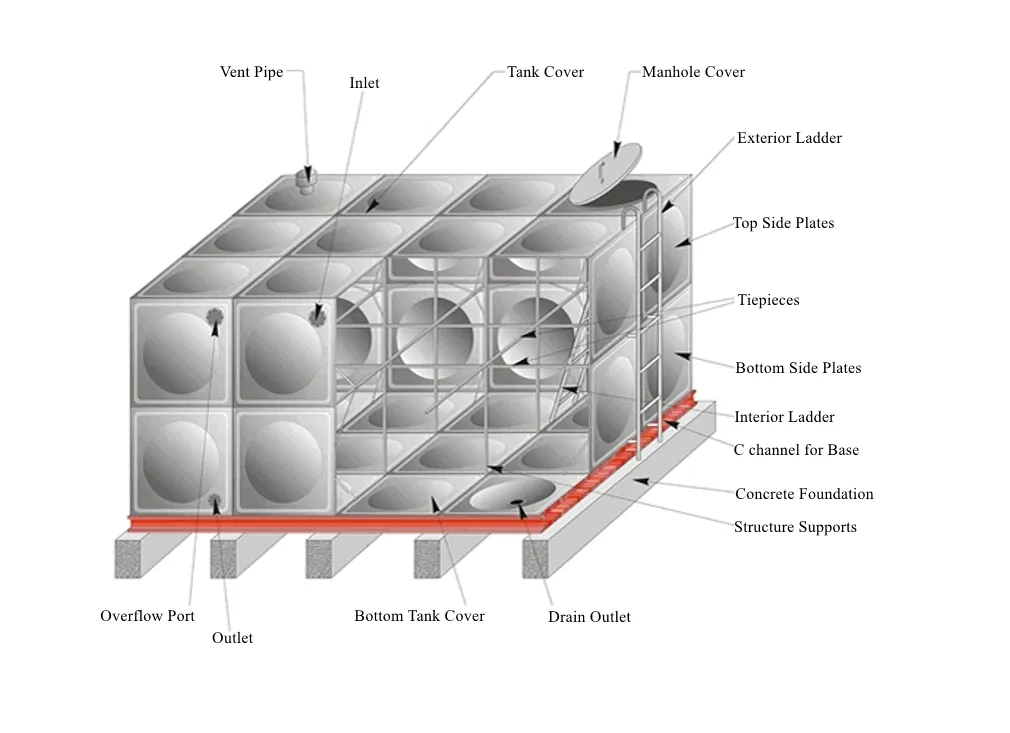loading...
- No. 9, Xingyuan South Street, Dongwaihuan Road, Zaoqiang County, Hengshui, Hebei, China
- admin@zjcomposites.com
- +86 15097380338
- Welcome to visit our website!
Innovative FRP Handrail Solutions for Enhanced Safety and Durability in Various Applications
Exploring the Benefits of FRP Handrail Systems
In today's construction and architectural landscape, the choice of materials is critical not only for aesthetics but also for safety, durability, and maintenance. Among the various materials available, Fiber-Reinforced Polymer (FRP) has emerged as a popular choice for handrail systems. FRP handrail systems offer a plethora of advantages, making them an ideal solution for both commercial and industrial applications.
Exploring the Benefits of FRP Handrail Systems
Safety is a primary concern for any handrail system, and FRP excels in this area as well. The non-conductive properties of FRP make it an excellent choice for environments involving electrical hazards, such as power generation facilities or chemical plants. Additionally, FRP can be engineered to meet specific slip resistance requirements, ensuring that individuals can maintain their footing even in wet or slippery conditions. This feature makes FRP handrail systems suitable for both indoor and outdoor applications, significantly enhancing safety.
frp handrail system

One of the most compelling reasons to choose FRP handrail systems is their low maintenance requirements. Unlike traditional materials such as wood or metal, which may require regular painting, sealing, or treatment to prevent decay or corrosion, FRP is virtually maintenance-free. This characteristic not only saves time and labor costs but also extends the lifespan of the handrail system. Owners and facility managers can divert their resources away from constant upkeep and focus more on their core operations.
The versatility of FRP handrail systems is another noteworthy attribute. Available in various colors, shapes, and designs, FRP can be customized to fit any architectural style, blending seamlessly with its surroundings. Whether for a sleek modern aesthetic or a more traditional appearance, FRP handrails can be tailored to meet specific design needs. Additionally, they can be manufactured in multiple sizes and capacities, accommodating a wide range of applications, from residential to industrial.
Environmental considerations are increasingly influencing material choices in construction. FRP is a greener alternative compared to traditional materials. Its production process typically requires less energy, and it can be made from recycled materials, reducing the carbon footprint. Furthermore, the longevity and low maintenance of FRP reduce the need for replacement, which equates to less waste in landfills over time.
In conclusion, FRP handrail systems bring together a unique blend of strength, safety, low maintenance, and design flexibility. Their non-conductive properties, durability against environmental factors, and aesthetic versatility make them an excellent choice for various applications. As industries continue to evolve, the adoption of advanced materials like FRP will undoubtedly play a crucial role in designing safer, more efficient, and more sustainable structures. For anyone considering a handrail system, exploring the benefits of FRP could lead to smarter, more strategic decisions that enhance both safety and style.
-
Premium FRP Handrail for All ApplicationsNewsAug.29,2025
-
Low Maintenance FRP Mini Mesh Grating ProductsNewsAug.29,2025
-
Innovative FRP Square Tubes for Modern Industrial SolutionsNewsAug.29,2025
-
FRP Water Storage Tanks Wholesale Solutions for Bulk BuyersNewsAug.29,2025
-
FRP Molded Grating Solutions for Diverse Industrial ApplicationsNewsAug.29,2025
-
Construction Advancements Through FRP Pultruded ProfilesNewsAug.29,2025
-
Why Choose FRP Railings, Guardrails, and Handrail Systems?NewsAug.29,2025
